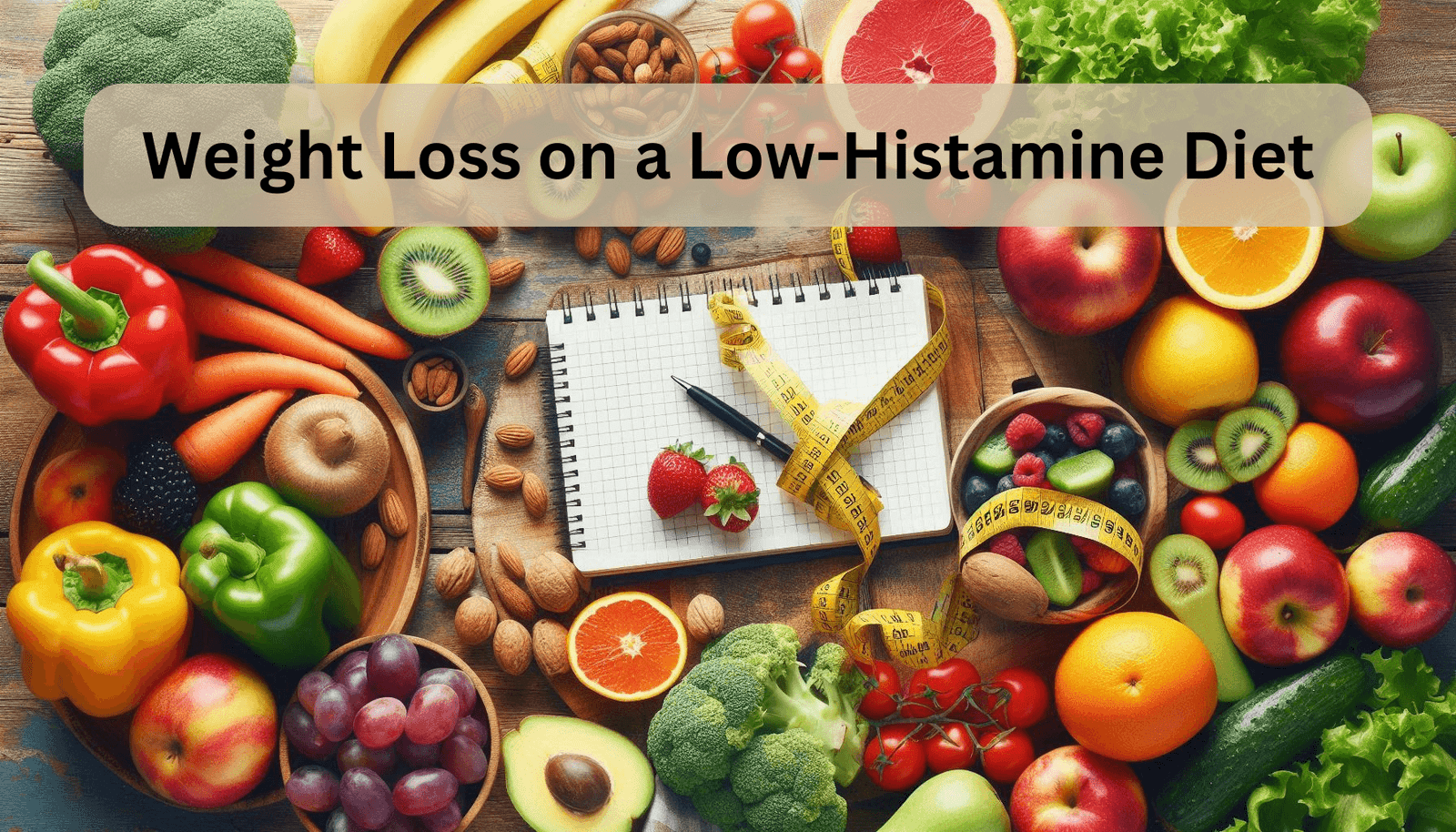If you’re struggling with weight loss and suspect histamine intolerance might be the culprit, you’re not alone. A low-histamine diet can be a game-changer for those dealing with unexplained weight gain, bloating, or inflammation. In this guide, we’ll explore how a low-histamine diet works, its benefits for weight loss, and practical tips to get started.
What is a Low-Histamine Diet?
A low-histamine diet involves avoiding foods that are high in histamine or trigger histamine release in the body. Histamine is a chemical involved in immune responses, digestion, and nervous system functions. For people with histamine intolerance, excess histamine can lead to symptoms like headaches, bloating, skin rashes, and weight gain.
How Does a Low-Histamine Diet Help with Weight Loss?
- Reduces Inflammation: High histamine levels can cause chronic inflammation, which is linked to weight gain and difficulty losing weight.
- Improves Digestion: Histamine intolerance often leads to bloating and water retention, which can make you feel heavier.
- Balances Hormones: Histamine affects hormones like cortisol and estrogen, which play a role in fat storage.
- Boosts Energy: By reducing histamine-related fatigue, you’ll have more energy to exercise and stay active.
Foods to Eat on a Low-Histamine Diet
Here’s a list of low-histamine foods that are safe to eat and support weight loss:
Vegetables
- Fresh zucchini
- Cucumbers
- Leafy greens (e.g., spinach, kale)
- Sweet potatoes
- Broccoli
Proteins
- Fresh chicken or turkey
- Fresh fish (e.g., salmon, cod)
- Eggs (if tolerated)
Fruits
- Apples
- Pears
- Blueberries (in moderation)
- Mangoes
Grains
- Quinoa
- Rice
- Oats
Healthy Fats
- Coconut oil
- Olive oil
- Flaxseeds
Foods to Avoid on a Low-Histamine Diet
Avoid these high-histamine foods that can trigger symptoms and hinder weight loss:
- Aged cheeses (e.g., cheddar, parmesan)
- Fermented foods (e.g., sauerkraut, kimchi)
- Processed meats (e.g., salami, bacon)
- Alcohol (especially wine and beer)
- Citrus fruits (e.g., oranges, lemons)
- Tomatoes and tomato-based products
7 Tips for Weight Loss on a Low-Histamine Diet
- Start Fresh: Choose fresh, unprocessed foods to minimize histamine levels.
- Cook at Home: Preparing meals at home ensures you control the ingredients and avoid hidden histamines.
- Eat Small, Frequent Meals: This helps stabilize blood sugar levels and reduces histamine buildup.
- Stay Hydrated: Drink plenty of water to flush out toxins and reduce bloating.
- Incorporate Anti-Inflammatory Foods: Add turmeric, ginger, and omega-3-rich foods to your diet.
- Track Your Progress: Keep a food diary to identify triggers and monitor your weight loss journey.
- Exercise Regularly: Low-impact exercises like yoga, walking, or swimming can help manage histamine levels and boost metabolism.
Sample Low-Histamine Meal Plan for Weight Loss
Here’s a simple 1-day meal plan to get you started:
Breakfast
- Oatmeal with fresh blueberries and a drizzle of honey.
- Herbal tea (e.g., chamomile or peppermint).
Lunch
- Grilled chicken salad with leafy greens, cucumber, and olive oil dressing.
- A side of quinoa.
Snack
- Sliced apples with almond butter.
Dinner
- Baked salmon with steamed broccoli and sweet potato mash.
Dessert
- Fresh mango slices.
FAQs About Weight Loss on a Low-Histamine Diet
1. Can a low-histamine diet help with belly fat?
Yes, by reducing inflammation and bloating, a low-histamine diet can help you lose stubborn belly fat.
2. How long does it take to see results?
Most people notice improvements in symptoms like bloating and energy levels within 1-2 weeks, but weight loss may take 4-6 weeks.
3. Can I exercise on a low-histamine diet?
Absolutely! Low-impact exercises like yoga, walking, or swimming are ideal for managing histamine levels.
4. Are there any supplements that can help?
Quercetin, vitamin C, and DAO (diamine oxidase) supplements may support histamine balance. Always consult your doctor before starting any supplements.
Final Thoughts
A low-histamine diet isn’t just for managing allergies or intolerances, it can also be a powerful tool for weight loss. By focusing on fresh, anti-inflammatory foods and avoiding high-histamine triggers, you can reduce bloating, boost energy, and achieve your weight loss goals.




